Synchronization of Fractional-Order Hyperchaotic Systems via Fractional-Order Controllers
Abstract
In this paper, the synchronization of fractional-order chaotic systems is studied and a new fractional-order controller for hyperchaos synchronization is presented based on the Lyapunov stability theory. The proposed synchronized method can be applied to an arbitrary four-dimensional fractional hyperchaotic system. And we give the optimal value of control parameters to achieve synchronization of fractional hyperchaotic system. This approach is universal, simple, and theoretically rigorous. Numerical simulations of several fractional-order hyperchaotic systems demonstrate the universality and the effectiveness of the proposed method.
1. Introduction
Fractional calculus is a 300-year-old mathematical topic. Although it has a long history, it has not been used in physics and engineering for many years. However, during the last twenty years or so, fractional calculus starts to attract increasing attentions of physicists and engineers from an application point of view [1, 2]. It was found that many systems in interdisciplinary fields could be elegantly described with the help of fractional derivatives. Many systems are known to display fractional-order dynamics, such as viscoelastic systems [3], dielectric polarization [4], electrode-electrolyte polarization [5], electromagnetic waves [6], quantitative finance [7], and quantum evolution of complex systems [8].
It is well known that chaos cannot occur in autonomous continuous-time systems of integer-order less than three according to the Poincarè-Bendixon theorem [9, 10]. A famous example of a continuous-time three-order system which exhibits chaos is the Lorenz system [11]. The order of this system can be defined as the sum of the orders of all involved derivatives. However, in autonomous fractional-order systems, it is not the case. For example, it has been shown that the fractional order Chua′s circuit with an appropriate cubic nonlinearity and with order as low as 2.7 can produce a chaotic attractor [12]. In [13], chaos and hyperchaos in fractional-order Rössler equations are discussed, in which it is shown that chaos can exist in the fractional-order Rössler equation with order as low as 2.4, and hyperchaos can also exist in the fractional-order Rössler hyperchaotic system with order as low as 3.8. Also in [14, 15], chaotic behaviors in the fractional-order Chen system are studied and the lowest order to have chaos in this fractional order Chen system is shown to be 2.1 and 2.92, respectively.
In recent years, hyperchaotic system is also considered with quickly increasing interest [16, 17]. Hyperchaotic system is usually defined as a chaotic system with more than one positive Lyapunov exponent, which implies that its dynamics are extended in several different directions simultaneously. It has more complex dynamical behaviors than chaotic system. Typical examples are fractional-order hyperchaotic Chen′s system [18], hyperchaotic Lorenz system [19, 20], and hyperchaotic Rössler system [21–23]. As we known, hyperchaos synchronization is very important, but it is also very difficult. However, there are only a few synchronization methods, such as feedback controller [20, 24] and nonlinear controller [25]. Most of the above synchronization methods concentrate on certain fractional systems, and there are few general methods that can be applied to control arbitrary fractional-order hyperchaotic systems.
On the other hand, the fractional-order control, which is a generalization of the traditional integer-order control, is becoming a matter of concern because of its flexibility and integrity [26–29]. The TID controller [27], the PIλDμ controller [28], and the CRONE controller [29] are the well-known fractional-order controllers. In these papers, it is verified that fractional-order controller is implemented more easily and more efficiently compared to the traditional controller.
Therefore, in this paper, we present a new fractional-order controller to synchronize the arbitrary 4D fractional-order hyperchaotic systems. The control approach which is based on the Lyapunov stability theory has the following three advantages. (1) It is so general that it can be applied to almost all four-dimensional (4D) hyperchaotic systems. (2) It can synchronize the systems very fast with little control cost and no changes on the parameters of the original systems. (3) It is very simple, easily realized experimentally, and more suitable for engineering applications. Numerical simulation results of synchronization of the fractional-order hyperchaotic Chen system, the fractional-order hyperchaotic Lorenz system, and the fractional-order hyperchaotic Lü system demonstrate the effectiveness and the validity of the proposed method.
2. Fractional Derivatives and Fractional Dynamic Systems
In this paper, we mainly consider the order 0 < q < 1. There are some general properties of the fractional-order derivative which are described as follows [1, 26].
Property 1. Caputo fractional derivative is a linear operator; that is,
Property 2. Caputo fractional derivative satisfies additive index law (semigroup property); that is,
Property 3. For the fractional-order nonlinear system , f(x(t)) satisfies the Lipschiz condition with respect to x; that is,
3. Synchronization of the Fractional-Order Hyperchaotic Systems
According to the Property 2 and formula (21), we have . In the same way, according to Properties 1 and 3 of the Caputo fractional derivative operator, there is a positive number λ, such that ∥ωe∥ ≤ λ∥u∥. Let ω* be the positive minimum value of {ω1, ω2, ω3, ω4}, then ∥e∥ ≤ λ/ω*∥u∥, and if u = 0, then e = 0.
Then we can easily obtain that the systems (14) and (18) are synchronized if and only if the error system (19) is asymptotically stable at the origin point.
Theorem 2. The fractional-order controller can make the error system (19) asymptotically stable at the origin point; that is, systems (14) and (18) are globally asymptotically synchronized if the control parameters k (ki ≥ 0, i = 1,2, 3,4) and ω (ωi ≥ 0, i = 1,2, 3,4) satisfy the following conditions:
(1)
(2)
Proof. Since system (14) is fractional-order hyperchaotic system and Ax,y is a bounded matrix, there is a nonnegative constants M such that ∥Ax,y∥ ≤ M. We introduce a Lyapunov function
Differentiating V with respect to t, we have
(1)
(2)
(1)
(2)
Consider a three-dimensional fractional-order nonlinear system
Corollary 3. The fractional-order controller can control the error system (32) responses to the asymptotically stable at the origin point, that is, systems (30) and (31) are globally asymptotically synchronized, if the control parameters k (ki ≥ 0, i = 1,2, 3) and ω (ωi ≥ 0, i = 1,2, 3) satisfy the following conditions:
(1)
(2)
4. Simulation and Analysis
In this section, three 4D fractional-order hyperchaotic systems are used as examples to illustrate how to use the results obtained in this paper to analyze the synchronization of fractional-order hyperchaotic systems.
4.1. Synchronization of the Fractional-Order Chen Hyperchaotic System
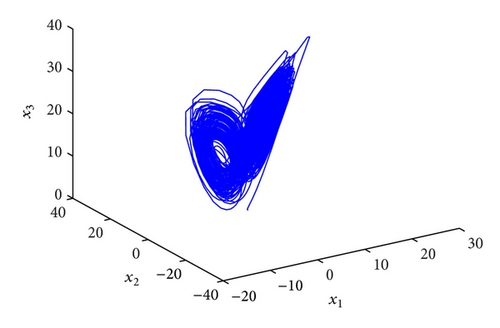
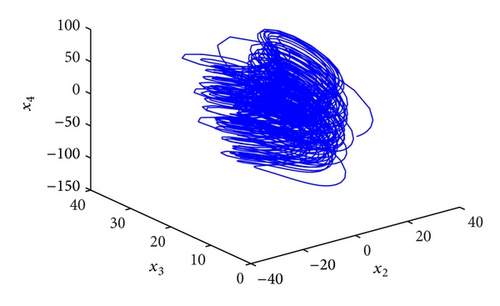
In order to implement this controller easily, we select the parameters k1 = k2 = k3 = k4 = 100, ω1 = ω2 = ω3 = ω4 = 1, and initial values x(0) = (2,2, 1,1), y(0) = (−4, −4, −5, −5), u(0) = 0; the numerical results, illustrated in Figure 2, show that the error system is driven to original point very fast; that is, the system (36) and (37) are synchronized. From Figure 2, we can obtain that two systems are synchronized about at 0.1 s, so the fractional-order controller can synchronize the hyperchaotic Chen systems very effectively.
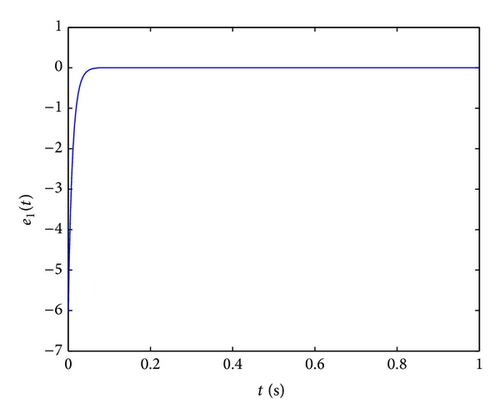

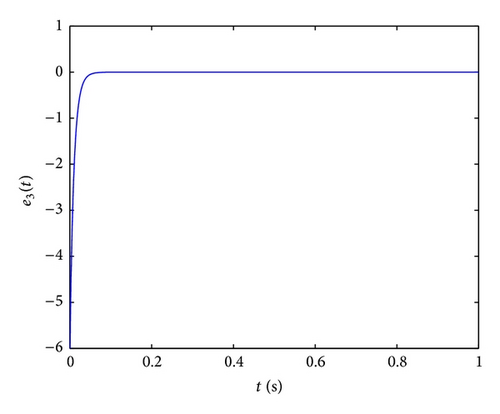
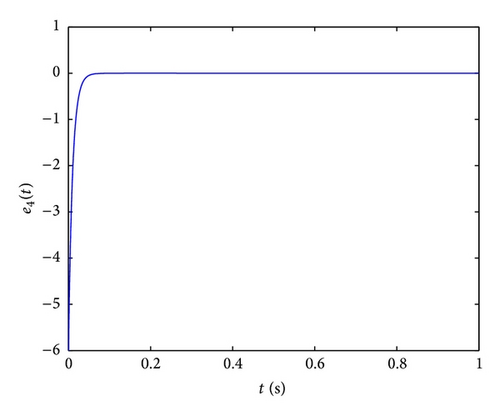
- (i)
When k1 = k2 = k3 = k4 < 5, two systems cannot achieve synchronization.
- (ii)
When 5 ≤ k1 = k2 = k3 = k4 < 25, two systems achieve synchronization, but the synchronization times are more than 1 s.
- (iii)
When 25 ≤ k1 = k2 = k3 = k4 ≤ 4650, two systems achieve synchronization very fast and the synchronization times are less than 1 s, which are shown in Figure 3(a).
- (iv)
When k1 = k2 = k3 = k4 > 4650, two systems cannot achieve synchronization.
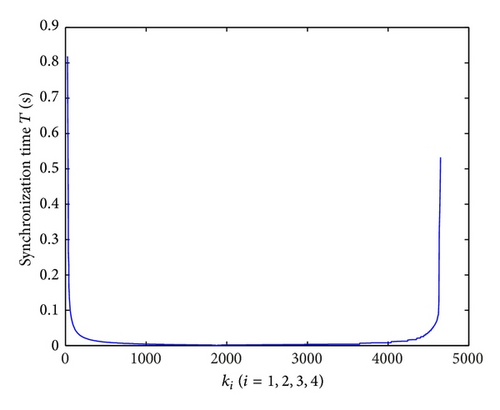
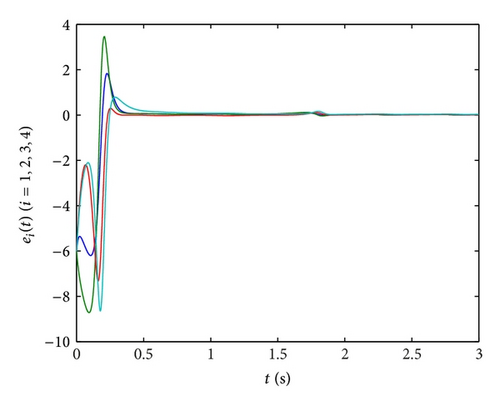
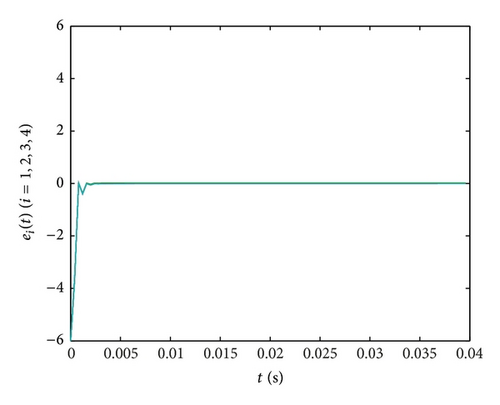
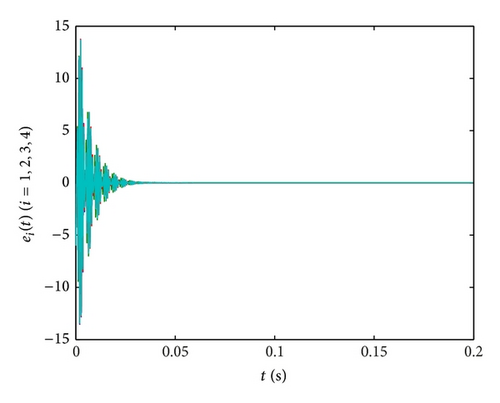
In Figures 3(b)–3(d), the time evolutions of the error functions between systems (36) and (37) are given with ki = 15,1875,4500 (i = 1,2, 3,4), respectively. Furthermore, we find that the optimal value of ki (i = 1,2, 3,4) is about 750. And the more the parameters are close to 750, the shorter the time will be required for synchronization of the drive system and response system, the better the effect of synchronization will be.
4.2. Synchronization of the Fractional-Order Hyperchaotic Lorenz System
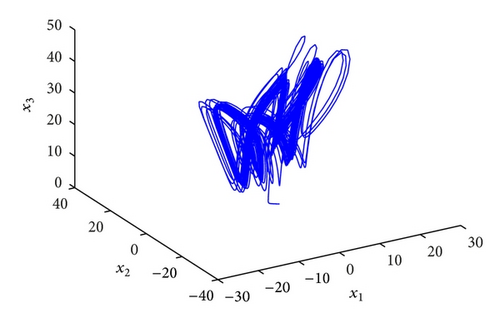
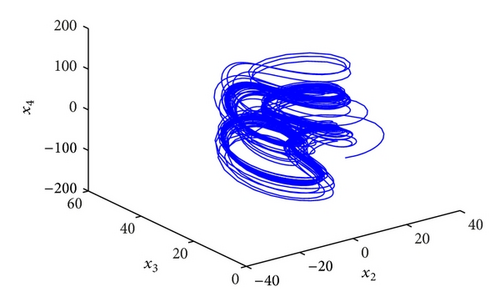
In order to implement this controller easily, we also select the parameters k1 = k2 = k3 = k4 = 100, ω1 = ω2 = ω3 = ω4 = 1 and initial values x(0) = (−2, −2, −1, −1), y(0) = (4,4, 5,5), u(0) = 0; the numerical results, illustrated in Figure 5, show that the error system (43) is driven to original point; that is, the systems (41) and (42) are synchronized. From Figure 5, two systems are synchronized about at 0.05 s, which demonstrates that the fractional-order controller can synchronize the Lorenz system very effectively and fast.
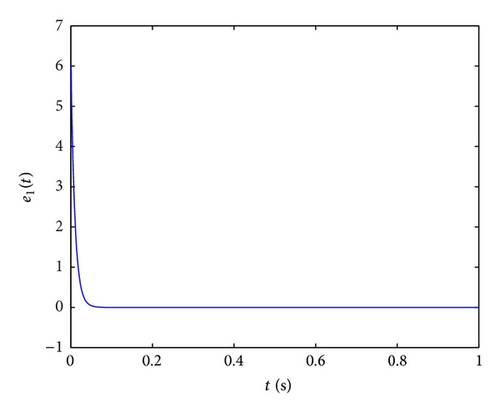
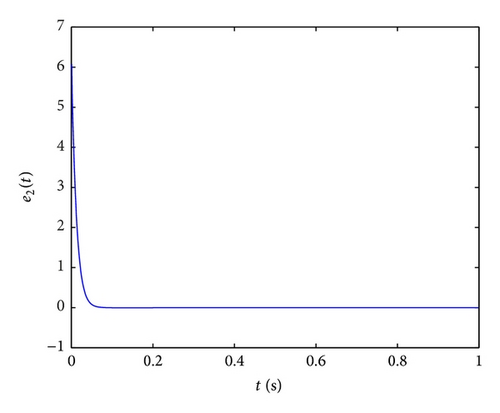
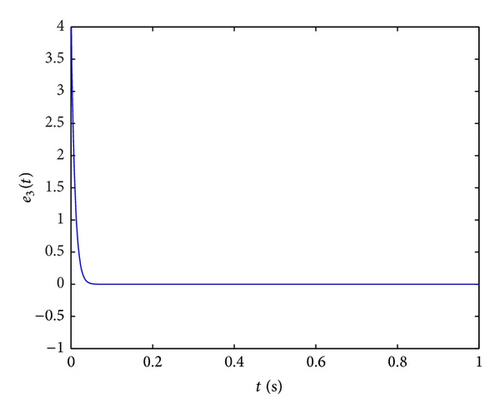
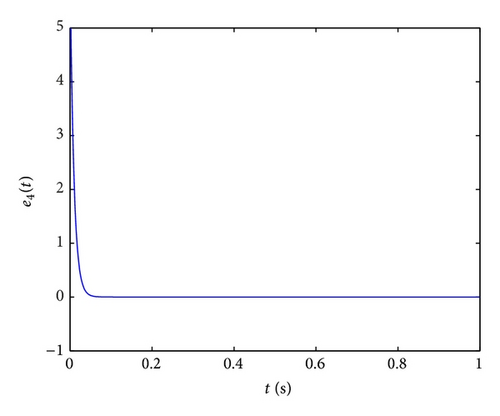
- (i)
When k1 = k2 = k3 = k4 < 4, two systems cannot achieve synchronization.
- (ii)
When 4 ≤ k1 = k2 = k3 = k4 < 30, two systems achieve synchronization, but the synchronization times are more than 1 s.
- (iii)
When 30 ≤ k1 = k2 = k3 = k4 ≤ 1902, two systems achieve synchronization very fast and the synchronization times are less than 1 s, which are shown in Figure 6(a).
- (iv)
When k1 = k2 = k3 = k4 > 1902, two systems cannot achieve synchronization.
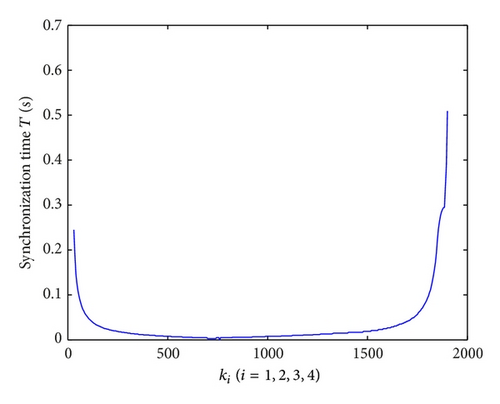
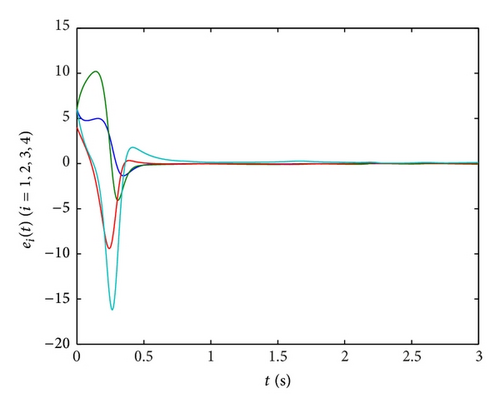
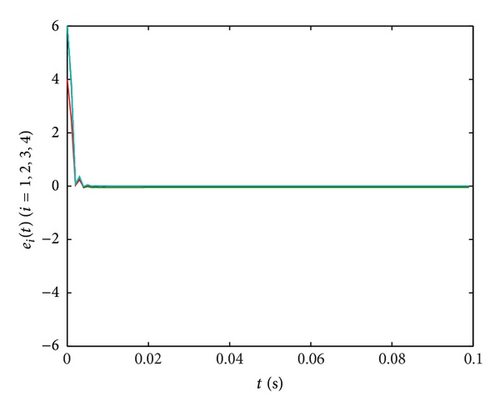
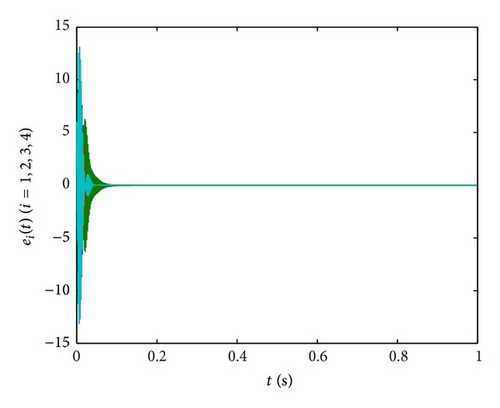
In Figures 6(b)–6(d), the time evolutions of the error functions between systems (41) and (42) are given with ki = 10,750,1800 (i = 1,2, 3,4), respectively. Furthermore, we find that the optimal value of ki (i = 1,2, 3,4) is about 750. And the more the parameters are close to 750, the shorter the time will be required for synchronization of the drive system and response system, the better the effect of synchronization will be.
4.3. Synchronization of the Fractional-Order Hyperchaotic Lü System
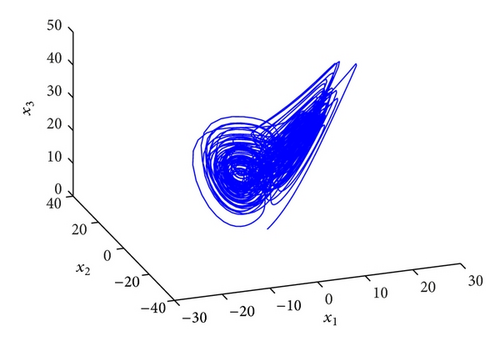
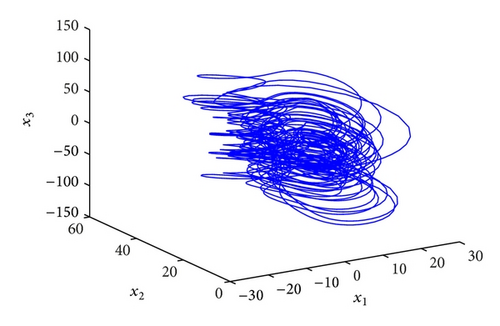
In order to implement this controller easily, we also select the parameters k1 = k2 = k3 = k4 = 100, ω1 = ω2 = ω3 = ω4 = 1 and initial values x(0) = (−2,2, −1,1), y(0) = (4, −4,5, −5), u(0) = 0; the numerical results, illustrated in Figure 8, show that the error system (47) is driven to original point; that is, the systems (45) and (46) are synchronized. From the Figure 8, we can obtain that two systems are synchronized about at 0.1 s, so the fractional-order controller can synchronize the Lü′s system very effectively and fast.
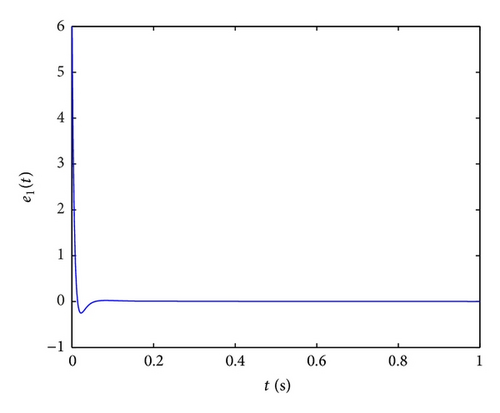
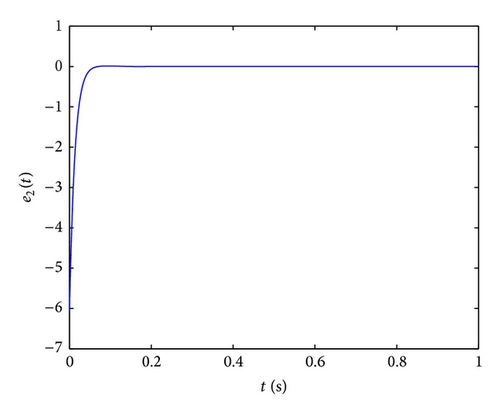
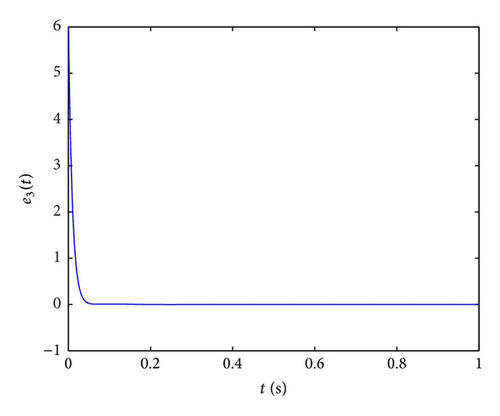
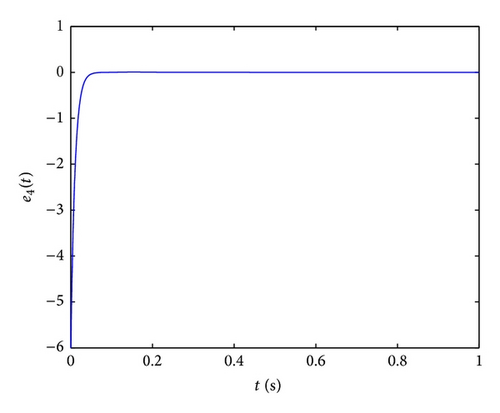
- (i)
When k1 = k2 = k3 = k4 < 10, two systems cannot achieve synchronization.
- (ii)
When 10 ≤ k1 = k2 = k3 = k4 < 205, two systems achieve synchronization, but the synchronization times are more than 0.1 s.
- (iii)
When 205 ≤ k1 = k2 = k3 = k4 < 4500, two systems achieve synchronization very fast and the synchronization times are less than 0.1 s, which are shown in Figure 9(a).
- (iv)
When k1 = k2 = k3 = k4 > 4500, two systems cannot achieve synchronization.

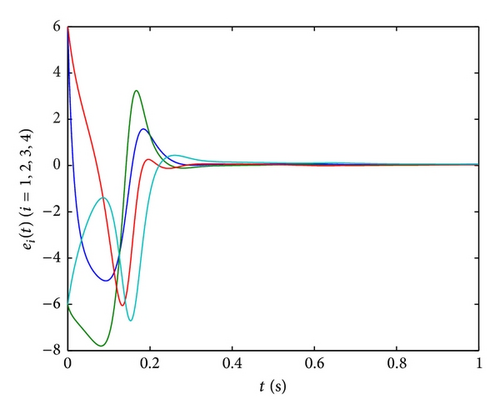
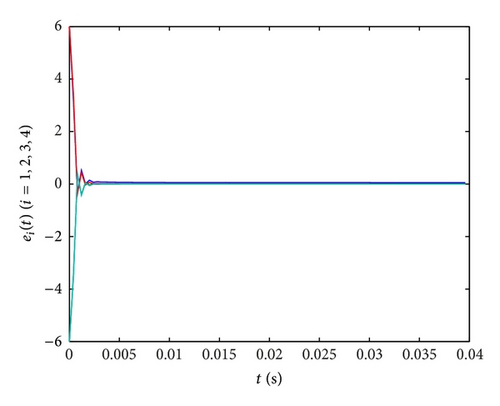
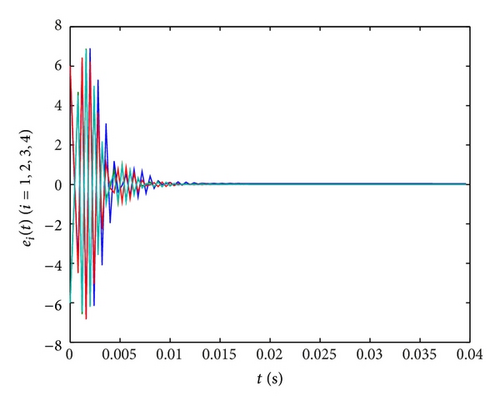
In Figures 9(b)–9(d), the time evolutions of the error functions between systems (45) and (46) are given with ki = 20,2000,4000 (i = 1,2, 3,4), respectively. Furthermore, we find that the optimal value of ki (i = 1,2, 3,4) is about 2000. And the more the parameters are close to 2000, the shorter the time will be required for synchronization of the drive system and response system, the better the effect of synchronization will be.
4.4. Fractional-Order Control in the Presence of Measurement Noise
Further, in order to study the control performance of the proposed fractional-order controller in the presence of measurement noise, we add the white noise with variance D = 2 into the first formula of the controlled fractional-order hyperchaotic Chen system and Lorenz system. The control results of x1(t) without and with noise are given in Figures 10(a)–10(d), which show that the method can effectively filter out the out-of-band noise and thus reduce the noise effect on the control. This also shows the superiority of the proposed fractional-order controller.
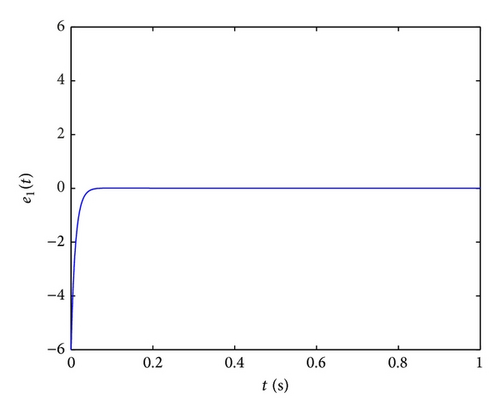
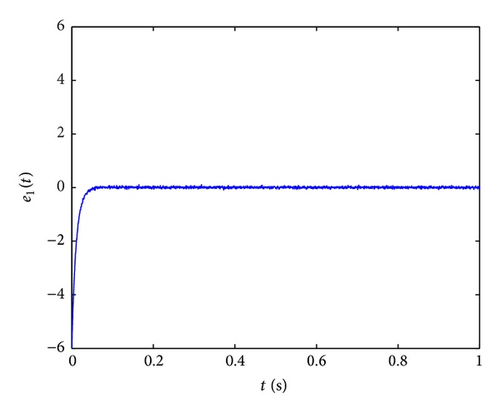
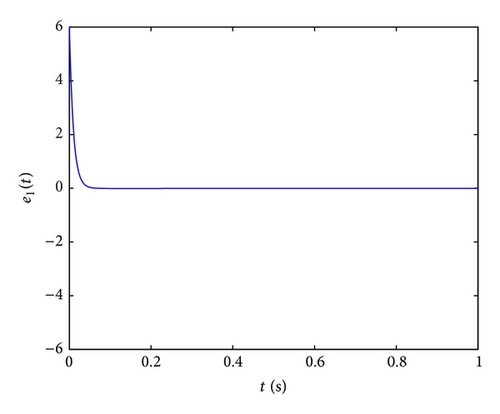
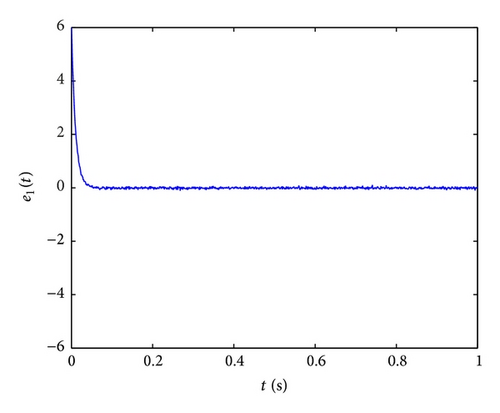
5. Conclusion
In conclusion, we proposed a fractional-order controller and presented a synchronization law for the 4D fractional-order hyperchaotic systems. According to the Lyapunov stability theorem of the fractional systems, the proposed method achieved to synchronize arbitrary 4D fractional-order hyperchaotic systems. Our proposed controller is very simple and could be easily realized experimentally. Furthermore, the present method is universal, that is, for almost all 4D fractional-order systems, and the controllers obtained are similar in form. Numerical simulation results of synchronization of the fractional-order hyperchaotic Chen system, the fractional-order hyperchaotic Lorenz system, and the fractional-order hyperchaotic Lü system demonstrate the effectiveness and the validity of the proposed method. And we give the optimal value of the parameters by numerical simulation. Furthermore, we have implemented and verified our method for other fractional-order hyperchaotic systems [21, 32, 33], namely, the generalized Henon-Heiles system [32], the Rössler system [21], the hyperchaotic Chua system [33], and so forth. The numerical simulation results indicated that the controller can make the fractional-order hyperchaotic systems synchronize very effectively and fast, and it provides a theoretical basis for the applications of synchronization in fractional hyperchaotic systems. In the future work, we will discuss the synchronization of hyperchaotic systems which have the different structure.
Conflict of Interests
The authors declare that there is no conflict of interests regarding the publication of this paper.
Acknowledgments
This work is supported by Artificial Intelligence Key Laboratory of Sichuan Province 2014RYJ05, The Opening Project of Sichuan Province University Key Laboratory of Bridge Non-Destruction Detecting and Engineering Computing 2013QYJ01, and Found of Sichuan University of Science and Engineering Grant nos. 2012PY17, 2012KY06.




